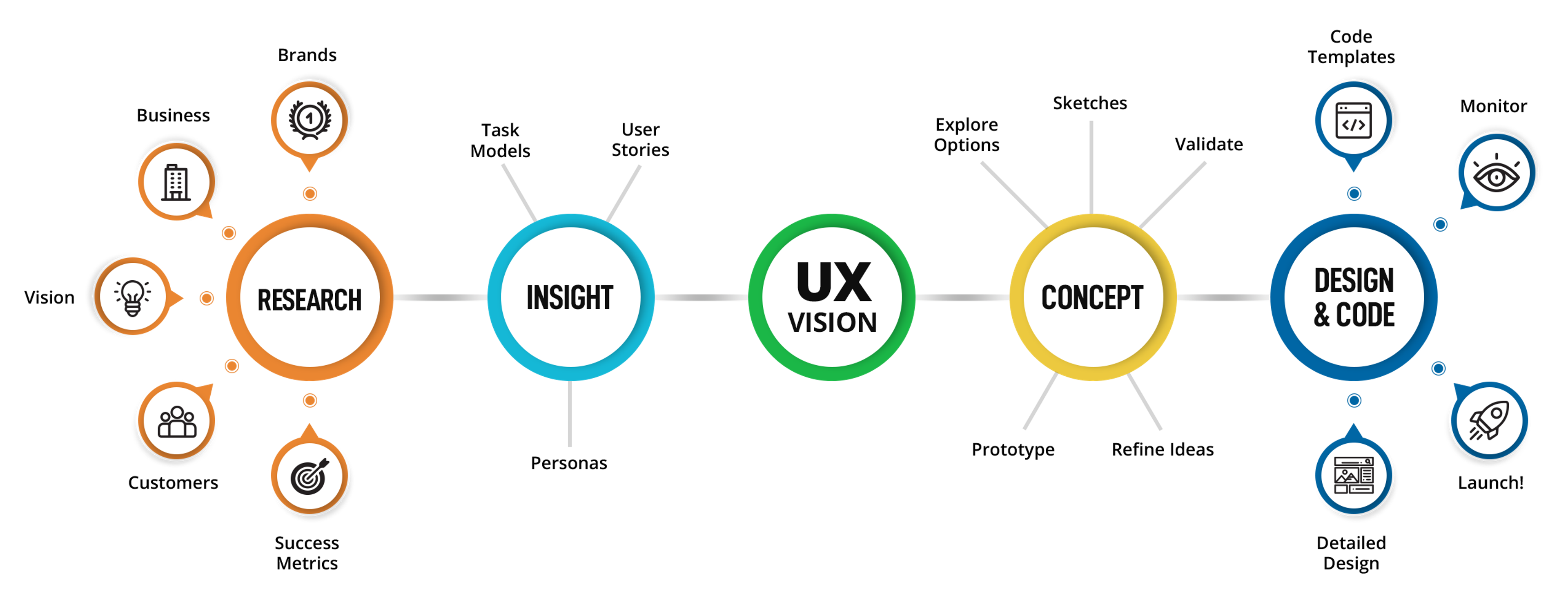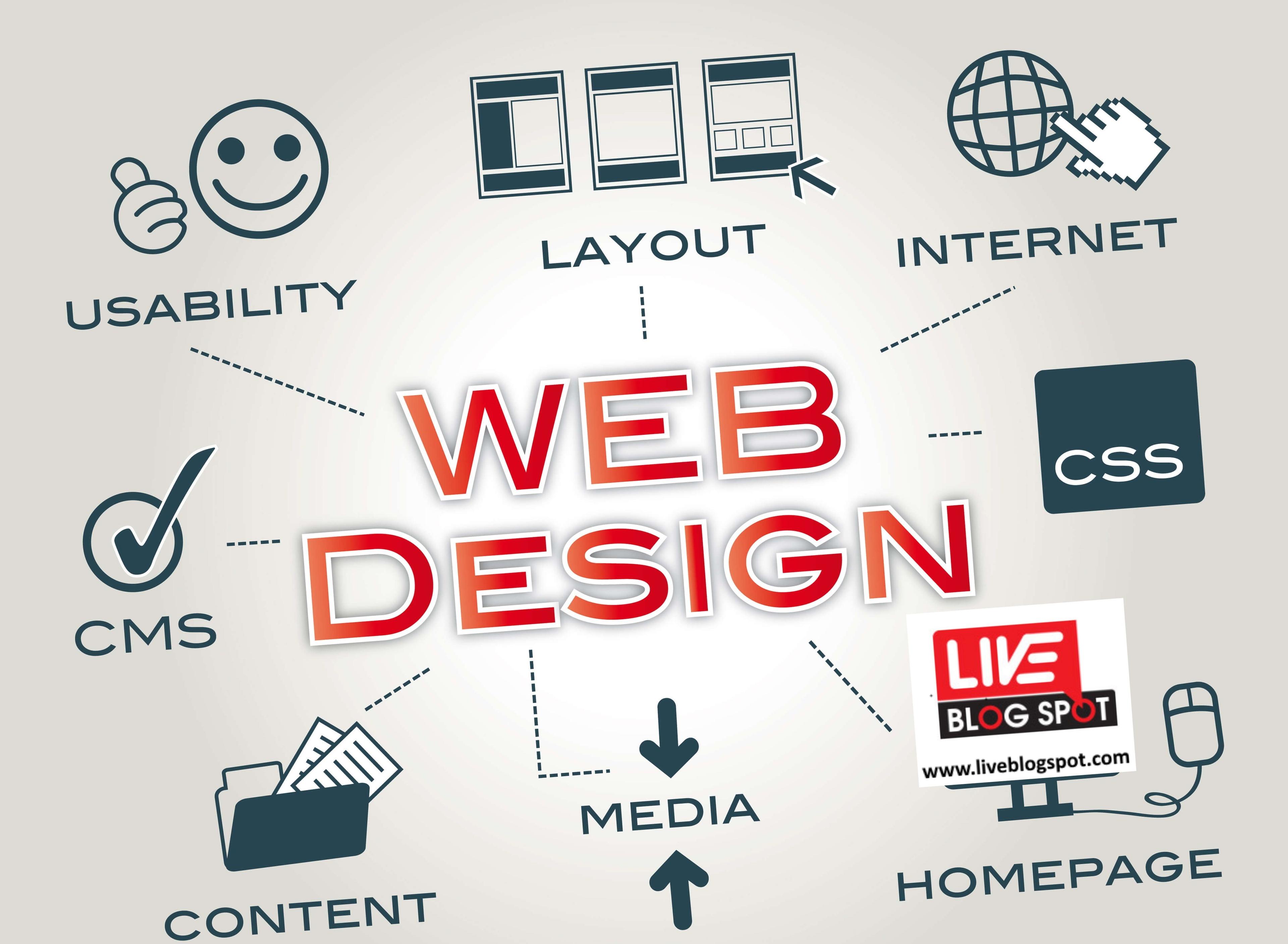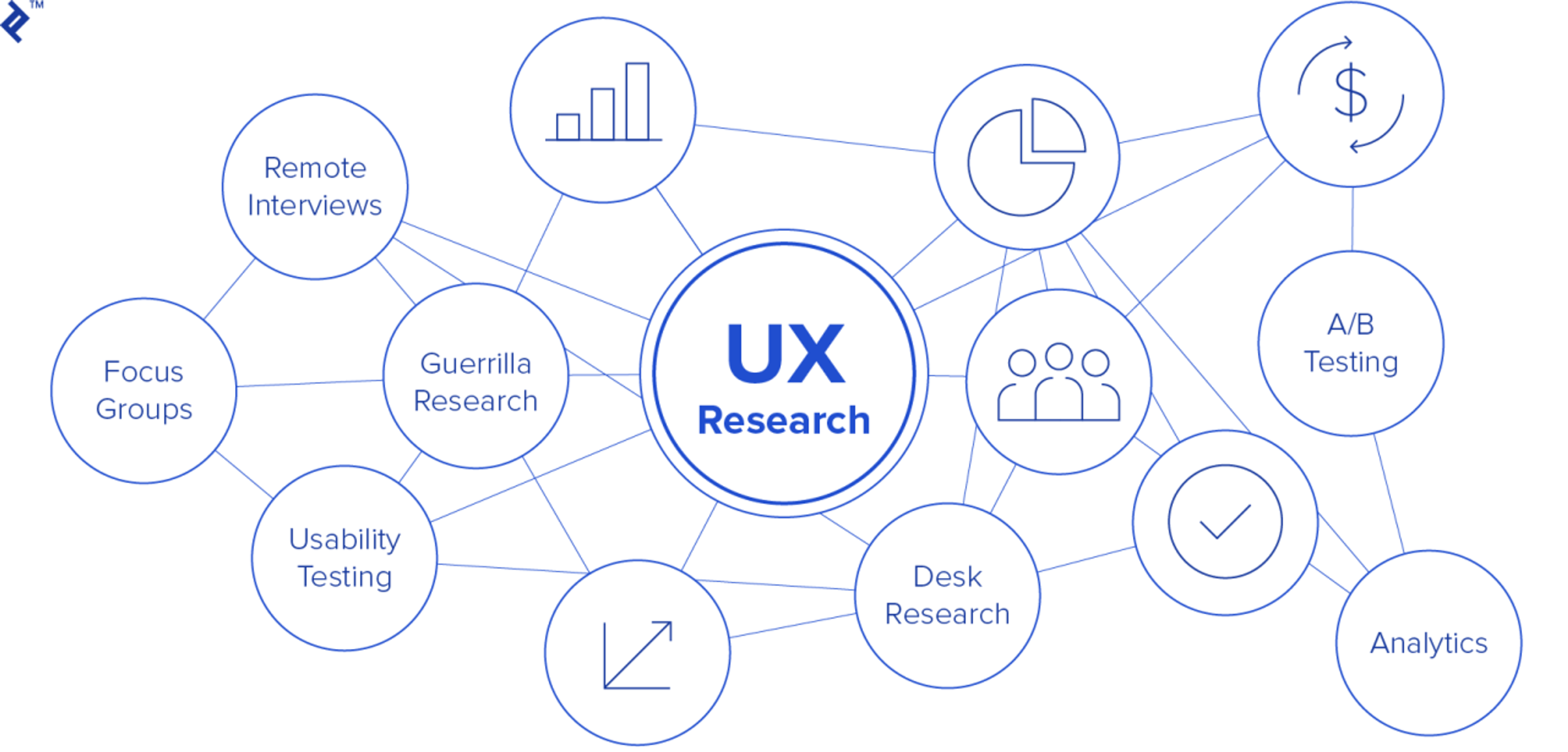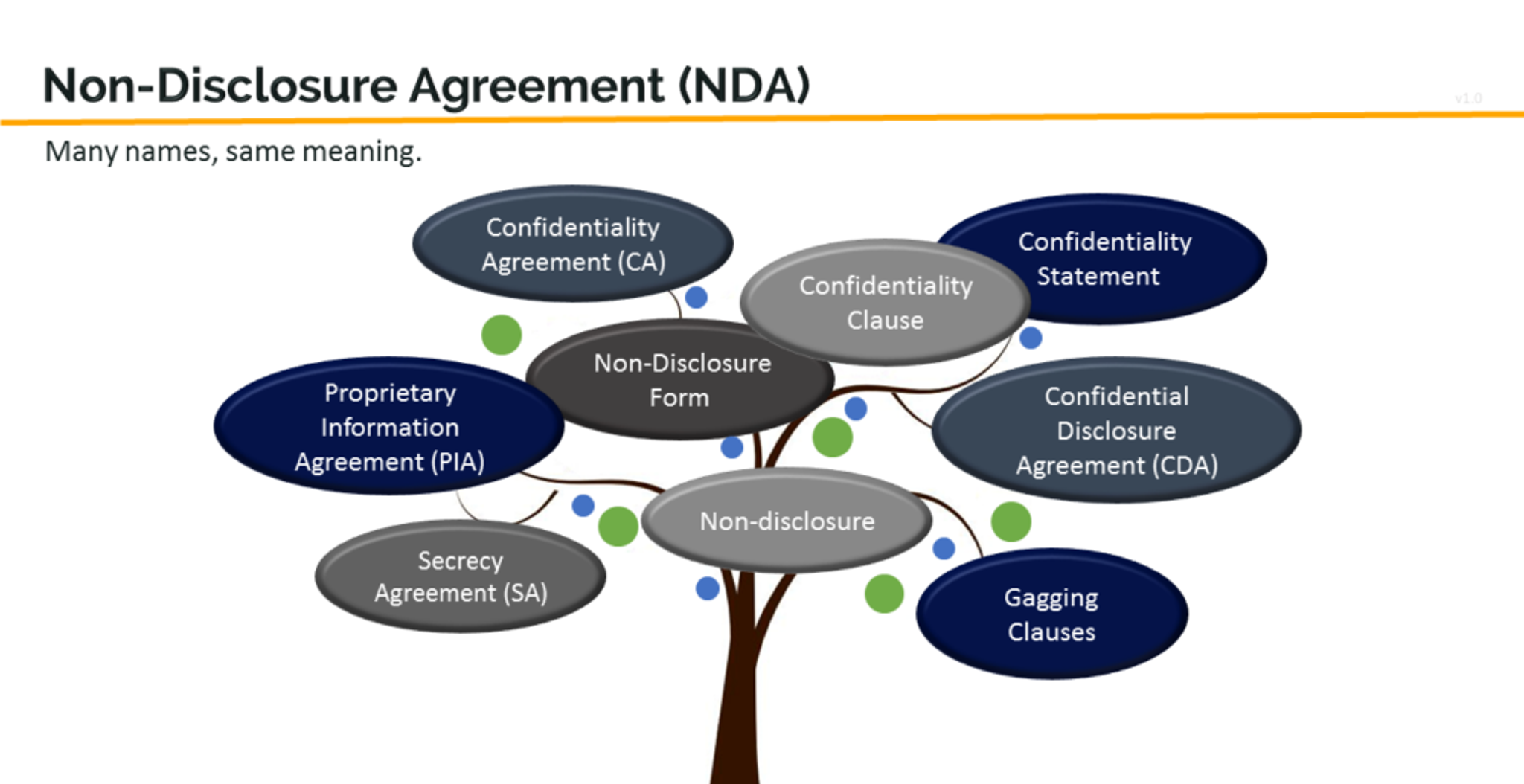UX design is an ever-evolving field and one of tech's most popular career paths. You have two primary options as a UX designer: work as a freelance designer or join a UX design firm. Each option has advantages and disadvantages, so weighing all your options before making any decisions is essential.
This article will explore the differences between working as a freelance UX designer and joining a UX design firm. We’ll look at the pros and cons of each approach so that you can make an informed decision about which path is right for you.
Working as a Freelance UX Designer
Freelance UX design is designing user experiences (UX) for clients without being employed. Freelance UX designers provide services to their clients on a project-by-project basis and are typically hired to help companies improve the usability of their products or services.
The advantages of working as a freelance UX designer.
Flexibility and autonomy in work schedule and project selection: Freelance UX design is an excellent choice for designers who want the freedom to determine their workflow and projects.
Working as a freelancer allows designers to control their schedule, meaning they can choose which projects to work on and when to complete them. With this autonomy comes flexibility; freelance UX designers can decide how much time they want to dedicate to each project, when and where they want to work, and who their clients will be.
Source: dribble

Moreover, a freelance UX designer has the opportunity to specialize in the area of UX design that interests them most. This makes it easier for them to find projects that match their skillset while allowing them to expand their portfolio with more diverse projects.
Additionally, freelance UX designers have the unique experience of working with clients from various industries, which gives them valuable insights into the user needs of different sectors.
Finally, the ability to select specific projects also gives a freelance UX designer more control over their income. By taking on multiple short-term projects or pursuing higher-paying contracts, they can achieve more excellent financial stability than a standard contract job offers.
Higher earning potential with the ability to set your rates: Setting your rates as a freelance UX designer allows you to increase your earning potential substantially. As a freelancer, you control how much you charge clients for your services.
The beauty of this is that you can adjust your rates depending on the project and the client’s budget. This can allow you to take on more projects and make more money than if employed by a firm.
Moreover, setting your rates also allows you to pursue higher-paying gigs, which can be especially beneficial if those projects align with your skillset and interests. By taking on these high-value contracts, freelance UX designers have the potential to make more money than they would with an employer.
Additionally, since freelance work has no salary cap, freelancers can negotiate their rates based on market demand for their services. This means that experienced UX designers who offer specialized skill sets or have impressive portfolios are usually rewarded with higher pay due to their increased value in the industry.
Source: Austin Distel on Unsplash

Overall, working as a freelance UX designer offers excellent potential for increased earnings through setting your rates and negotiating better deals for yourself.
By leveraging the flexibility of freelance work and pursuing higher-paying contracts, UX designers can achieve financial stability and success while also doing work they enjoy.
Diverse range of projects and clients, leading to a broader skill set: Freelance UX design offers an incredible opportunity for designers to gain exposure to various clients and projects. This diversified experience allows designers to develop a broader skill set as they learn from multiple sources how to create usable products and services that meet the needs of different types of users.
Furthermore, freelance designers can choose the type of projects they want, allowing them to focus on honing their skills in the most exciting areas.
Working with different clients also gives freelance UX designers access to new ideas and perspectives on UX design, which can help them stay ahead of the curve regarding industry trends. By understanding the needs and goals of various sectors, they can imagine creative solutions that address real user needs.
Additionally, this diverse range of clients allows freelancers to gain insights into how users interact with different products or services, enabling them to create experiences tailored to their target markets.
Furthermore, working as a freelance designer provides numerous opportunities for professional growth. Freelancers have more control over their work schedule and workloads, meaning they can dedicate more time and effort towards honing their skills in various areas.
This allows them to become more experienced in different UX design aspects and build an impressive portfolio showcasing their capabilities.
Source: Thanzi Thanzeer on Unsplash

Overall, working as a freelance UX designer has numerous advantages that lead to greater skill development than working in a traditional role at a firm.
The flexible schedule and diverse range of projects offered by freelance work allow designers to explore different industries while gaining insights into how users interact with products or services across multiple platforms.
This enables them to become well-rounded professionals who can craft innovative designs that meet real user needs across many industries.
Challenges of Freelance UX Design Career
Despite the numerous advantages of freelancing as a UX designer, various challenges must be considered.
Irregular Income and the Need for Self-promotion
One major challenge freelance UX designers face is the irregularity of their income. Since freelancers have no salary cap, their earnings fluctuate depending on the projects they take on and their success in negotiating rates with clients. This can lead to income insecurity as there is no guarantee that they will receive steady work.
In addition, freelance UX designers must also put in extra effort to promote themselves and acquire new clients. As many other professionals are vying for the same roles, freelancers must establish and maintain an online presence to stand out.
This often requires them to invest time and money into creating portfolios, websites, and social media accounts demonstrating their capabilities as UX designers. Moreover, freelancers need to monitor industry trends to stay up-to-date with current practices continuously and regularly reach out to potential clients directly or through job boards to find new gigs.
Source: wix

Overall, being a successful freelance UX designer requires technical expertise and proficiency in self-promotion and networking skills to secure ongoing work opportunities.
Although this may be a challenge at first, once established as an expert designer, it can become easier to acquire contracts due to increased trust from potential clients. With determination and knowledge of the industry, a freelance UX designer can achieve financial stability while still having freedom over their workflow and projects.
Responsibility for Project Management and Client Communication
As a freelance UX designer, one of the main areas of responsibility is project management and client communication. Freelancers must manage their time efficiently to complete projects on time and deliver quality work.
They need to stay on top of deadlines, prioritize tasks, set goals, and be able to communicate progress with clients. Furthermore, they must develop strong client relationships to build trust and effectively collaborate on projects.
When working with different clients, freelancers must understand their needs and provide solutions that meet their expectations. This requires excellent communication skills to accurately assess clients' needs and explain how they can help them achieve their desired outcomes.
Moreover, they must be able to clearly articulate their ideas and explain complex design topics in simple words so that everyone involved can understand the proposed solutions.
It is also essential for freelancers to possess good problem-solving skills to effectively troubleshoot any issues that arise during a project's lifecycle. This could involve resolving any technical problems or helping the client implement specific changes that may arise along the way.
Additionally, since most freelance UX designers work remotely, they must stay up-to-date with the latest technology to ensure smooth communication between all stakeholders involved in a project.
Source: sdreatech

Becoming a successful freelance UX designer involves more than being a design expert - it also requires effective project management and stellar client communication skills.
By developing these skill sets and leveraging technology appropriately, freelancers can offer quality services while building strong relationships with clients that will result in repeat business opportunities.
Isolation and the Importance of Building a Professional Network
Freelancing as a UX designer can be a solitary experience that can leave freelancers feeling isolated from the professional community. This lack of human interaction can be problematic, as it decreases access to knowledge and resources that help freelance designers stay up-to-date with industry practices.
Furthermore, remote work can make it difficult for freelancers to effectively collaborate with clients and other stakeholders, as they cannot meet and discuss projects in person.
To stay connected while working remotely, freelance UX designers must actively build their professional network. By joining online groups and attending industry events, they can gain insights into the latest trends and connect with potential clients or partners who may offer lucrative opportunities.
Additionally, forming relationships with other professionals enables them to ask questions about best practices, share ideas for innovative designs, and provide advice on problem-solving techniques.
Furthermore, networking is an excellent way for a freelance UX designer to establish themselves as experts in their field. They can use social media platforms such as LinkedIn or Twitter to promote their work, engage with other professionals in forums or discussion boards, and post articles or tutorials outlining tips and tricks for successful design.
These activities will help them increase their visibility and demonstrate their expertise in UX and web design, which could lead to more business opportunities.
Source: liveblogspot

Building a professional network is essential for freelance UX designers who want to remain competitive while working remotely. By actively engaging with the community through various platforms and attending networking events regularly, they can gain insights into emerging trends while connecting with potential clients or partners who offer lucrative business opportunities.
Working in a UX Design Firm
Working in a UX design firm allows collaboration with a diverse team of professionals, providing valuable learning and professional development opportunities.
Definition of a UX Design Firm and Its Advantages
A UX design firm specializes in providing user experience (UX) services such as user research, user interface (UI) design, visual and interaction design, and usability testing.
A UX design firm typically comprises multidisciplinary professionals and experts with diverse backgrounds in graphic design, psychology, marketing, engineering, anthropology, and computer science. The goal of a UX design firm is to create products and services that are both functional and engaging for users.
The advantages of working with a UX design firm are numerous.
Stable income and benefits packages: Working for a UX design firm can be an excellent option for those looking to have a stable income and access to various benefits. These firms provide their employees competitive salaries, comprehensive health insurance packages, flexible work hours, generous vacation time policies, and additional perks such as free meals or gym memberships.
These firms often promote career development by allowing employees to attend workshops, conferences, and other events that will help them stay up-to-date on the latest trends in the field.
Additionally, many UX design firms offer mentorship programs where experienced professionals can mentor junior designers to help them grow their skill sets and increase their chances of success in their careers.
In addition to providing stable incomes and benefits packages that make working at a UX design firm attractive, these firms also allow employees to work with some of the top industry professionals.
As a result, this allows them to gain valuable insights into various aspects of UX design, such as user research methods or prototyping tools. They can also learn from colleagues who have experienced different types of projects, providing them with valuable lessons that can be applied both inside and outside the workplace.
Source: habr

Overall, working at a UX design firm provides many benefits that can’t be found in most other jobs. From competitive salaries and comprehensive benefits packages to career growth opportunities and access to expert mentorships - there are countless advantages for those considering a position at one of these businesses.
Collaborative work environment with opportunities for mentorship: When working at a UX design firm, employees benefit from a collaborative work environment that encourages mentorship and knowledge sharing. Designers have the opportunity to learn from experienced professionals who are experts in their field and can provide guidance on various aspects of UX design.
Collaborating with peers allows designers to discuss projects, share ideas, and receive feedback. This can help them develop better solutions and create more innovative designs.
In addition to providing a platform where designers can collaborate on projects, many UX design firms also offer mentorship programs that allow experienced professionals to mentor junior designers and help them expand their skill sets.
Through these programs, junior designers can gain insights into different design approaches and learn tips for successful implementation. Additionally, mentors often provide valuable advice and resources that help junior designers make informed decisions about future projects.
Furthermore, mentorship provides an opportunity for junior designers to gain access to industry networks, which may lead to new business opportunities or collaborations with other professionals.
By developing relationships with experienced professionals in the field, they can stay up-to-date with trends and changes in the UX industry without having to do extensive research themselves.
Source: Paul Hanaoka on Unsplash

Overall, working at a UX design firm offers a collaborative work environment where employees can access mentorships and networking opportunities that can help them grow professionally.
Junior designers benefit from engaging with established professionals who can guide all aspects of UX design - from user research methods to prototyping tools - while senior designers benefit by gaining access to industry networks which may lead to new business opportunities or collaborations with other professionals.
Access to a steady stream of projects and clients: Working at a UX design firm provides access to a steady stream of projects and clients. By working with various clients, designers can gain insights into different user needs and develop their skills in solving complex problems.
A UX design firm typically has a vast network of clients from various industries, allowing designers to work on projects with unique requirements, broaden their skill sets, and maximize their potential.
Additionally, having access to a steady stream of projects and clients provides more job security for UX designers. With the continuing demand for skilled professionals in this field, UX design firms can offer reliable employment opportunities that provide consistent income while allowing designers to remain competitive.
In addition, working with multiple clients allows designers to stay up-to-date on the latest trends in the market while gaining valuable experience. This is especially important in an ever-evolving industry where new technologies or techniques emerge frequently.
By staying current on emerging trends, freelance UX designers can ensure they can quickly adapt when new technologies come onto the scene or new customer demands arise in freelance business.
By working with a UX design firm, freelance UX designers have access to a steady stream of projects and clients that help them remain competitive while providing reliable employment opportunities and job security.
Access to multiple projects and clients also gives them valuable insights into various aspects of UX design, such as user research methods or prototyping tools, which can be used to create innovative solutions for customers’ needs.
Additionally, being exposed to different industries allows them to stay up-to-date on emerging trends so they can quickly adapt when necessary.
Challenges of Working in a UX Design Firm
Working in a UX design firm can be an excellent opportunity for freelance designers to gain experience while developing their skill sets. However, as with any job, specific challenges accompany this type of work.
Limited Control over Project Selection and Creative Direction
One of the biggest challenges is the lack of control over project selection and creative direction. While UX design firms typically provide a wide range of projects and clients to choose from, designers may be limited in deciding which ones they would like to work on and how they would like to approach them creatively.
Additionally, because most UX design firms have many clients, it is easy for designers to become overwhelmed by the constant influx of requests. It can be challenging for designers to manage their workloads when faced with multiple client demands. This can lead to burnout or frustration if designers cannot keep up with the pace.
Another challenge with working at a UX design firm is the strict deadlines that must be met for projects to stay on track and keep clients happy. Designers have limited control over when projects must be completed and often juggle multiple tasks simultaneously to meet deadlines. This can add stress and pressure to designers already dealing with tight timelines.
Finally, most UX design firms require employees to sign non-disclosure agreements (NDAs) that limit what they can disclose about their projects or clients outside of work. This can make it difficult for designers to showcase their work publicly or share ideas freely without fear of legal repercussions.
Source: extreno

Working at a UX design firm can provide many benefits, such as competitive salaries, comprehensive benefits packages, career growth opportunities, access to expert mentorships, and more.
However, it has challenges, such as limited control over project selection and creative direction, overwhelming workloads due to multiple client requests, strict deadlines, and NDAs limiting what employees can share outside the office walls.
Strict Deadlines and Potential for Overtime Work
Working in a UX design firm can also present challenges related to tight deadlines and potential overtime work. Designers must often adhere to strict timelines, which can add stress and pressure, especially if they manage multiple project requests simultaneously.
Furthermore, designers may be required to work extra hours outside their regular schedules to meet tight deadlines. This can lead to exhaustion and burnout if the workload becomes too much for them to handle.
Additionally, not all companies compensate employees who take on extra work hours or accept tight deadlines as part of their jobs. This means some designers may put in extra effort without receiving additional pay or recognition.
This can create an imbalance between the expectations of employers and the compensation given to employees, leading to frustration and feelings of inadequacy.
Finally, working with tight deadlines also increases the chances of mistakes due to a lack of time or resources. Pressure from clients or supervisors can lead designers to rush through projects without thoroughly considering best practices or user needs, resulting in low-quality designs that do not meet customer expectations or user requirements.
Source: Lala Azizli on Unsplash

Overall, working full time job in a UX design firm presents advantages and challenges regarding strict deadlines and the potential for overtime work. While it gives designers access to steady project streams and reliable employment opportunities, it also puts pressure on them with tight timelines.
It can lead to exhaustion if they do not receive appropriate compensation for taking on extra work hours. Additionally, rushing tasks due to time limitations increases the likelihood of mistakes being made, which could damage customer relationships or reduce user satisfaction levels.
Career Progression and Potential for Specialization
Working in a UX design firm can provide many opportunities for career progression and potential for specialization. As designers gain experience in the industry, they can take on more complex projects and specialize in specific areas such as user research, user interface design, information architecture, or accessibility. This allows them to hone their skills and create innovative solutions tailored to their client’s needs.
Additionally, freelance UX designers get exposure to different industries and products by working with multiple clients. This helps them stay current on emerging technologies or customer demands while gaining valuable insights into various aspects of UX design. With this knowledge, they can better understand user needs and create innovative solutions that meet customer requirements.
Lastly, most UX design firms also provide career development programs or mentoring opportunities to help designers build their skills and progress quickly. These programs often involve hands-on learning activities such as workshops or seminars with experienced professionals in the industry. They can also be supplemented with online learning platforms or tutorials that provide additional resources for self-learning.
Overall, working at a UX design firm provides many opportunities for career progression and potential for specialization. By taking advantage of these resources, designers can hone their skills and develop new ones while keeping up-to-date on emerging trends in the industry so they can quickly adapt when necessary.
Factors to Consider when Choosing Between Freelancing and Working in a Firm
When deciding between freelancing and working in a firm, it's essential to consider the level of flexibility and independence you desire. While freelancing offers the freedom to choose projects and set your schedule, working in a firm provides a more structured environment with a steady income and potential for career growth.
Individual Preferences and Work Style
Individual preferences and work styles should be considered when considering whether to freelance or work in a UX design firm. For example, freelancers have the freedom and flexibility to choose their projects and work hours, which can provide more control over their workloads and careers and higher job satisfaction.
On the other hand, working in a firm often provides more security with a steady paycheck and access to benefits such as health care coverage.
Freelance designers may thrive in an environment where they can pursue creative ideas independently and focus solely on designing solutions for clients.
This makes it easier for them to remain motivated and explore innovative solutions without feeling constrained by outside expectations. In addition, freelance designers can diversify their portfolios and work with clients within various industries or domains.
On the other hand, those who prefer stability may find it beneficial to work in a design firm with the potential for growth within the organization. Working at a firm gives designers access to collective resources such as expert mentorship programs to help them refine their skills while advancing their career paths.
Additionally, firms typically have comprehensive benefits that allow employees greater financial security than freelancers may have access to.
Source: Christina @ wocintechchat.com on Unsplash

Individual preferences and work styles should be considered when choosing between freelancing or working in a UX design firm. Freelancers may prefer the freedom and autonomy of choosing their projects.
At the same time, those seeking stability may find it advantageous to take on consistent employment with a firm that offers additional benefits such as career progression opportunities and access to mentorships. Ultimately, designers should consider both options carefully before deciding which path best suits them.
Financial Considerations and Risk Tolerance
Financial considerations and risk tolerance are important when choosing between freelancing and working in a UX design firm. For starters, freelancers typically have more flexibility when pricing their services and projects.
This means they can charge a fee that reflects the value of their work and the time commitment involved in completing the project. As such, they have the potential to earn more money than those working in a firm.
However, freelancers face financial uncertainty due to unreliable project streams and inconsistent client payments. This can be especially true for beginners without experience negotiating contracts or pricing their services.
In addition, freelance designers may need to invest more time and effort into marketing themselves and networking with potential clients. Moreover, they may also need to take on additional tasks, such as administrative work or bookkeeping, that can further stretch their resources.
On the other hand, those who choose to work in a UX design firm usually have more income and job security stability. Most firms offer competitive pay and benefits, while some even provide bonuses or equity options.
Additionally, designers in firms often have the support of a dedicated team to help with administrative tasks or handle client communication. This can free up their time and resources to focus solely on design work.
Financial considerations and risk tolerance must be carefully weighed when considering between freelancing and working in a UX design firm. Freelance designers may have more freedom.
Desired Level of Creative Control and Project Variety
When deciding between freelancing and working in a UX design firm, the desired level of creative control and project variety should be considered. Freelance designers typically have more autonomy over their projects, allowing them to choose clients and projects that best fit their interests and skillset.
This allows them to work on different products or services and explore innovative solutions without being constrained by external expectations. In addition, freelance designers gain exposure to different industries and products by working with multiple clients.
Furthermore, freelance designers can pursue creative ideas independently and collaborate with other professionals in the industry. By networking with peers, they can gain valuable insights into various aspects of user experience design while exploring new technology trends. This provides an excellent opportunity for professional growth while deepening their understanding of UX principles.
Source: uxtweak

On the other hand, those who choose to work in a firm may benefit from greater job security with access to benefits such as health care coverage or bonuses. However, designers may lack the same level of creative freedom due to internal organizational processes or protocols.
In addition, certain firms may focus on specific types of products or services that limit project variety, although some firms support employees seeking additional work outside company projects.
When considering freelancing and working in a UX design firm, the desired level of creative control and project variety should be considered. Freelancers may prefer having more autonomy over their projects, while those seeking stability may opt for consistent employment with access to benefits from firms. Both options provide excellent opportunities for career growth, so designers must consider their individual preferences before making a decision.
Professional Development and Long-term Career Goals
Professional development and long-term career goals are essential when choosing between freelancing and working in a UX design firm. For freelance designers, professional development and career advancement may involve more self-directed learning than those employed by a firm.
Freelancers typically need to take more excellent initiative in identifying areas for improvement, such as mastering new software or attending conferences and finding mentors or peers for feedback on their projects. This requires dedication and discipline but can result in highly specialized knowledge to help them stand out among other freelance designers.
Those employed at a UX design firm can access resources such as workshops, mentorship programs, or even on-the-job training that help them stay ahead of the industry trends and develop their skillset further.
Additionally, firms often provide employees with opportunities for upward mobility within the organization, leading to higher-paying positions and more responsibilities over time.
Regardless of the chosen route, individuals must develop their skills to remain competitive in the field continuously. Freelancers and those working in a firm should set long-term career goals reflecting their desired growth trajectory while actively seeking professional development opportunities that align with their interests. This approach allows them to move forward in their careers while staying motivated during challenging times.
Read more:
Conclusion
When deciding between freelancing and working in a UX design firm, it's essential to consider the desired level of creative control and project variety, financial considerations and risk tolerance, professional development opportunities, and long-term career goals.
Both options provide excellent opportunities for growth but may require different approaches when developing skills or networking with peers. Ultimately, individuals must carefully weigh their preferences before committing to either route to achieve success within the field of user experience design.


About Clay
Clay is a UI/UX design & branding agency in San Francisco. We team up with startups and leading brands to create transformative digital experience. Clients: Facebook, Slack, Google, Amazon, Credit Karma, Zenefits, etc.
Learn more

About Clay
Clay is a UI/UX design & branding agency in San Francisco. We team up with startups and leading brands to create transformative digital experience. Clients: Facebook, Slack, Google, Amazon, Credit Karma, Zenefits, etc.
Learn more






